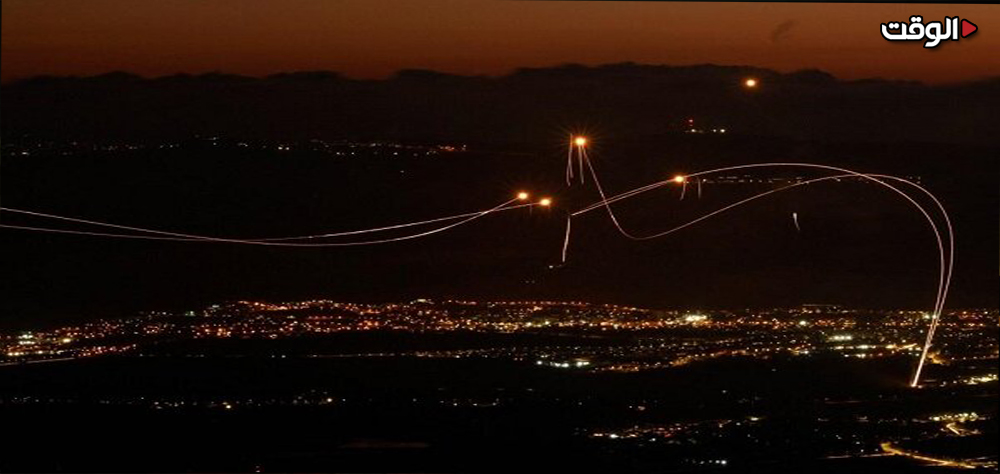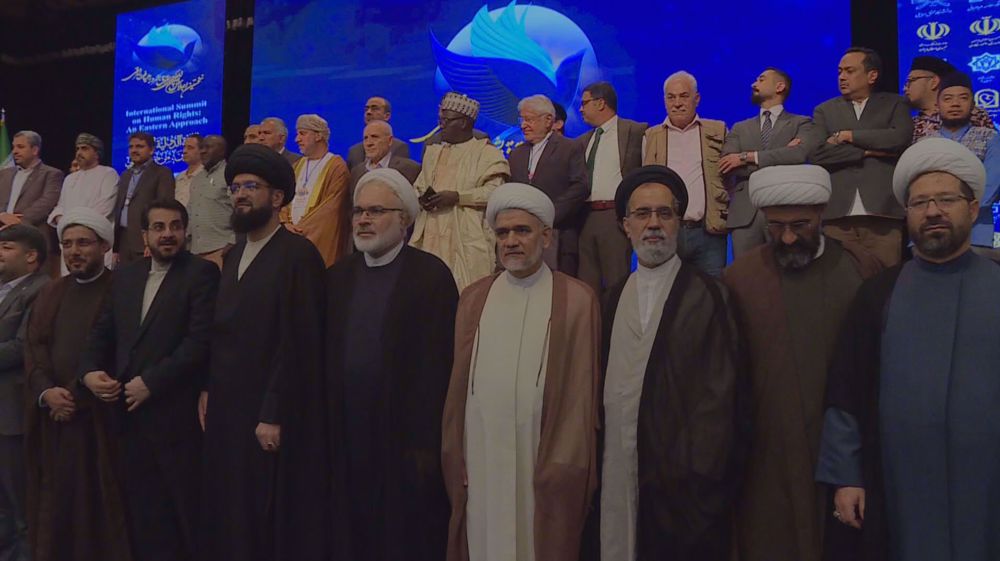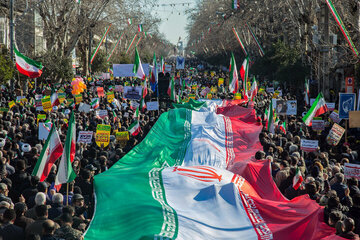Alwaght- On Sunday, the Lebanese Hezbollah launched its biggest operation against Israel since start of their confrontation on October 8. The attack, launched in early morning of Sunday in reaction to assassination of Hezbollah commander Fuad Shukr in Beirut earlier this month, saw firing 340 Katyusha rockets and tens of assault drones at 11 military sites deep into the occupied territories.
The massive attack, dubbed Operation Arbaeen by Hezbollah chief Sayyed Hassan Nasrallah, came after several weeks of strategic patience for punishment of the Israeli occupation, sending the message to the Israelis that no action against Lebanon will go unanswered within the framework of the balance of threat.
Following the attack, the Israeli army announced an emergency state for 48 hours and canceled all the flights in Ben-Gurion Airport. With its combined missile and drone operation, Hezbollah sent the message to Israel that this movement has reached a level of deterrence that can target the depth of the occupied territories, and in the meantime, it will use all its weapons, from missiles to drones.
Since the beginning of the Gaza war, Hezbollah targeted the occupied territories within a radius of a few kilometers in a calculated manner and within the framework of the conflict rules, in order to prevent the escalation of the war, but as the war dragged on and Israeli crimes against the defenseless Palestinian civilians heightened, Hezbollah broadened the scope of its missile operations.
Hezbollah's combined attack took aback the Israelis and despite the substantial Israeli push to censor the scale of damage and casualties, Israeli media outlets reported missile impacts and consequent fires in some areas. The Israeli media warned the heads of this regime that if sensitive centers were targeted, they should announce it sooner than Seyed Hassan Nasrallah to avoid further humiliation.
The power outage in some areas of the occupied territories and the reopening of underground shelters to accommodate the settlers after the limited-sclae attack by Hezbollah, showed that in the event of a full-scale war, the Israelis would have to spend a long time in complete darkness and stay in shelters.
Surprising and precise intelligence work
One of successes of Hezbollah in the massive Sunday operation is show-off of the ability to utilize the element of surprise at a time the enemy in the past three weeks was on high alert in expectation of Hezbollah and Iranian response.
According to the principles of military warfare, in order to fire hundreds of missiles and drones, the launch pads must be prepared and the missiles moved a few days before the operation, and it seems that Hezbollah has made the pre-attack preparations with complete skill and without the knowledge of the enemy. This is while the American and Israeli intelligence services claimed in recent weeks that they are monitoring all the movements of Iran and Hezbollah, and Washington security officials said that they will inform Tel Aviv of the details before Hezbollah wants to carry out an operation.
Despite their strong intelligence and military equipment, the US and Israel failed to determine the time of the attack. In the Hamas operation on October 7, the Israeli intelligence were caught by surprise, too, but since Hezbollah’s operation was launched in a war condition, the Israeli intelligence setback is way heavier than the Operation Al-Aqsa Storm.
Hezbollah has been directly confronting the occupation regime for more than ten months and every day it fires dozens of rockets towards the occupied lands. This factor not only did not make the regime succeed in reading the mind of the Hezbollah, but also the movement managed to mislead the enemy with its daily operations and used them as a cover to deal the main blow, and this was what the Israelis did not expect.
Designing multi-layer operation
The Sunday attack scored a big victory for Hezbollah in terms of demonstrating the ability to design complicated and multi-layer operations.
The type of Hezbullah operation showed that the resistance forces have spent a long time to successfully enforce this plan and have weighed all the aspects and put them to work in order to achieve their aims accurately. The passage of missiles and drones through the much-vaunted Iron Dome air defense system is not an overnight task and it shows that the Lebanese resistance has worked on the weak and strong points of the enemy to avoid interception.
In this operation, Hezbollah has accurate information about the weak points of the enemy, and the Israelis who where confident of the Iron Dome capabilities did not imagine that their interceptors will be outmanuvered. The deception of the Iron Dome for drones to penetrate the air defenses to strike the targets was a part of the operational power of the resistance that surprised the enemy.
According to Nasrallah, the delay in the operation was to avoid intelligence failure and to coordinate with other branches of the Axis of Resistance.
On the other hand, keeping the missile launch platforms hidden from the sight of enemy fighters and radars was also one of the tactics of the Hezbollah forces, and according to Nasrallah, they did not inflict any defeat.
Hezbollah asserted that all drones were launched at the designated times and from all launchers and crossed the borders of Lebanon and moved from multiple routes to the intended targets. Reportedly, some of the drones penetrated the occupied territories from the sea for the first time, disclosing the intelligence dominance of Hezbollah and knowledge of the enemy's radar blind spots.
Also, Hezbollah targeted sites that were sensitive and strategic, and the Israelis themselves did not think that Hezbollah had any information about them. One of these sites was the command center of the assassination operation of Fuad Shakar in the Mossad and the Unit 8200 of the Israeli army. This unit, which is responsible for wire tapping, decoding, and other forms of intelligence collection, is a completely secret organization, but Hezbollah was able to discover it.
In addition to ground targets, Israeli sea equipment could not survive the attacks. Israeli media reported that Hezbollah struck an Israeli warship of Dafora class. The media further said that the attack killed a crew member of the ship. Hitting this warship bears a clear message: In case of an all-out war, all Israeli facilities and equipment in land and sea will undergo fire of the resistance.
Gaining several military, strategic, and symbolic aims
Another important point in Hezbollah's operation is the success in destroying the designated targets. The most important targets of Hezbollah were the military intelligence base of Aman and Unit 8200 in Gillot near Tel Aviv, where Mossad headquarters is located. Unit 8200 is a special unit affiliated with Israel's military intelligence and responsible for cyber espionage and Hezbollah struck it for the first time. These centers were thought by Israeli officials as impenetrable, but Hezbollah challenged this false thought.
In recent months, Hezbollah flew several Hod Hod drones undetected to film sensitive Israeli sites to create a target bank for the time of war. They helped Hezbollah in Sunday operation.
In its operations, Hezbollah showed that it has a detailed and extensive database of important sites of Israel, which it will target in the event of a full-scale war. The accurate information from the Mossad spy centers, to which access is extremely difficult, showed that nothing in the occupied territories is hidden to the resistance and actually Israelis are not safe anywhere.
This capability beside the power of pinpoint-accuracy missiles make striking vital infrastructures of Israel, like the ammonia storages in Haifa port, highly likely.
Hezbullah's military might shows that if the war begins, the resistance can push the war deep into the occupied territories and stir a new and bigger wave of reverse migration, internal displacement, and street protests.
Psychological warfare
Waging a psychological warfare in which Hezbollah chief has a special skill was the supplementary part and final blow Hezbollah dealt to exacerbate the impacts of defeat on the Israeli society.
Hours after the operation, Nasrallah in a televised address elaborated on the aspects of the attack and declared its full success.
Describing the attack totally successful, Nasrallah held that it was part of the resistance options, and Iran and other resistance branches will act separately to punish the Israeli occupation.
Though announcing the end of the first phase of Hezbollah's operation, Ansarullah warned that if the enemy starts a new adventure, Hezbollah will respond strongly. This is a warning to the Tel Aviv leaders to reconsider their plans if they intend to attack Lebanese soil again, because the next response from Hezbollah will be more powerful than before and ballistic and precision missiles can be used in the next attacks.
These remarks will put the Israelis in a state of confusion and anxiety until response from other branches of Axis of Resistance comes, and this is part of the psychological warfare whose effects are not less than missile attacks.
From another aspect, with this move, Hezbollah head shattered the strict Israeli censorship on the scale of damage.
Whether this attack was a final one in response to the assassination of Fuad Shukr or just a feint attack to unlock the Israeli guard and then deal the main blow to the enemy is a question that is confusing and worrisome to the political and military leaders of Tel Aviv, making them feel the heavy shadow of revenge.



























